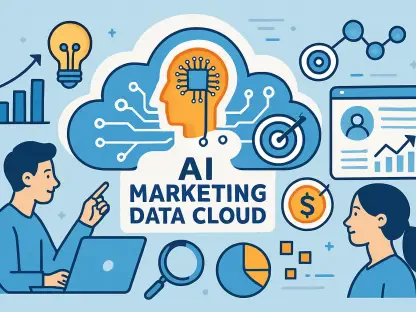Natural Language Processing (NLP) is a powerful subset of artificial intelligence (AI) that bridges the gap between human communication and machine interaction. By leveraging AI, machine learning, and linguistics, NLP enables machines to understand, interpret, and respond to human language. For businesses, this means deriving valuable insights from vast amounts of data without the need for manual coding. Despite its transformative possibilities and its projected market valuation of USD 453.3 billion by 2032, NLP faces numerous challenges that hinder its full potential. In this article, we will explore these challenges and the solutions that can unlock the full benefits of NLP for businesses.
Technical Limitations in NLP
Managing Language Ambiguity
One of the major hurdles in NLP is the ambiguity inherent in human language. Words and sentences can have multiple meanings, with the correct interpretation often dependent on context. For example, consider the phrase “bank deposit.” Without additional context, it’s unclear if this refers to placing money in a bank or sediment accumulating at a riverbank. Current NLP models frequently struggle to resolve these ambiguities, especially in complex scenarios involving idiomatic expressions, cultural references, and specialized jargon.
To overcome these issues, advanced machine learning techniques that utilize contextual clues are essential. Additionally, incorporating human input through methods such as crowdsourcing or expert annotation can significantly enhance the precision of NLP models. By combining sophisticated algorithms and diverse, quality training data, we can reduce the ambiguity and improve the system’s understanding of complex language scenarios.
Enhancing Contextual Understanding
Another facet of NLP’s technical limitations is the challenge of achieving in-depth contextual understanding. For machines to successfully interpret human language, they must move beyond surface-level text analysis. This requirement demands sophisticated algorithms capable of parsing context from extensive and diverse datasets. A high level of contextual understanding is critical for accurately interpreting nuanced language scenarios, such as recognizing the sentiment behind a sarcastic remark or understanding the implied meaning in a culturally specific idiom.
Leveraging advanced machine learning techniques like deep learning, which can model complex patterns and dependencies in data, is key. Also, the use of transfer learning, where models pre-trained on vast datasets are fine-tuned for specific tasks, can significantly elevate the contextual comprehension levels of NLP systems. These technologies help NLP models understand not just the words but the intent behind them, making interactions more natural and intuitive.
Data Challenges in NLP Implementation
Ensuring Data Quality
For NLP systems to function effectively, the quality of their training data is paramount. Inadequate or substandard data can result in flawed learning patterns, leading to inaccuracies and inefficiencies in the system’s output. Data that lacks breadth and diversity, in particular, can give rise to biases, where the NLP models inadvertently learn and perpetuate harmful stereotypes. These biases can have damaging implications for certain demographics and contexts, severely impairing the system’s utility and fairness.
To counter these challenges, a proactive approach is crucial. Actively seeking out and incorporating diverse datasets during training can mitigate the risk of bias. This strategic data selection promotes more equitable, accurate, and effective NLP models, capable of handling a wide array of language variations and contexts. Regular audits and updating these datasets are also essential to maintain the quality and relevance of the data used by NLP systems.
Addressing Bias in Data
Bias in NLP systems is a significant concern because algorithms reflect the biases present in their training datasets. When an NLP model is trained on biased data, it can produce narrow, discriminatory outcomes. For businesses, this could mean inadvertently alienating specific customer segments or perpetuating stereotypes, which can have legal and reputational repercussions.
One solution to addressing bias involves diversifying the data sources used for model training. Incorporating datasets that represent various cultures, languages, and perspectives can help to develop more inclusive and balanced models. Furthermore, ongoing audits and updates of the NLP models, guided by ethical AI practices, are essential for ensuring fairness and reducing bias over time. Continuous monitoring and refinement of NLP systems can help ensure that they adapt to evolving societal norms and expectations.
Scalability and Cost Barriers
Computational Demands
Advanced NLP models, particularly those utilizing deep learning techniques, require extensive computational power. This necessity poses significant barriers to scalability and accessibility, particularly for smaller organizations or those operating under resource constraints. The considerable computational demands also translate to higher costs, both in terms of financial expenditure and environmental impact.
To address these barriers, optimizing NLP algorithms for efficiency is crucial. Techniques like pruning and quantization can reduce the model’s computational load, making it more accessible and cost-effective. Additionally, leveraging cloud computing and specialized hardware can provide scalable solutions that enhance the reach and utility of NLP technologies, allowing a broader range of businesses to benefit. Integrating these technologies can significantly lower the entry barriers for small to medium enterprises (SMEs), enabling broader adoption across various sectors.
Cost-Effective Solutions
While the implementation of advanced NLP systems can be costly, there are ways to manage and mitigate these expenses. One effective strategy is the use of cloud-based solutions, which offer flexible and scalable computing power. These services allow businesses to access robust NLP capabilities without investing in heavy infrastructure. Moreover, as cloud technology continues to advance, the associated costs are expected to reduce, making it even more accessible.
Developing more efficient algorithms that require less computational power is another critical approach. By focusing on models and techniques that optimize resource usage, businesses can achieve cost savings without compromising on NLP performance. Collaboration with technology providers to create tailored solutions can also help organizations maximize the return on their NLP investments, balancing cost against functionality and performance.
Ethical and Regulatory Hurdles
Fairness and Bias
With the growing integration of NLP into various applications, the ethical implications of these technologies are becoming increasingly significant. One primary concern is fairness and bias. NLP models trained on data that reflects societal biases can perpetuate and even exacerbate these biases. For example, biased data may lead to discriminatory outcomes in customer service bots or hiring algorithms, affecting specific demographics unfairly.
To ensure the fairness of NLP models, it’s crucial to carefully curate training data, ensuring it represents a wide range of perspectives and contexts. Techniques like bias-detection algorithms and fairness constraints can be employed during the model training process to identify and mitigate biases. Regular audits and updates to the models can help maintain fairness as societal norms evolve.
Privacy and Transparency
Another critical ethical concern is privacy. Given the vast amounts of textual data often required by NLP systems, ensuring the protection of sensitive information is paramount. Organizations must obtain clear and informed consent from users before collecting and using their data. Implementing robust data anonymization and encryption techniques can help safeguard user privacy.
Transparency in NLP models is equally important. Businesses must strive to make their NLP systems more interpretable and explainable. This involves openly sharing information about data sources, training methods, and model architectures. Ensuring users understand how their data is used and the basis for the system’s decisions can build trust and facilitate more widespread adoption of NLP technologies.
Accountability and Inclusivity
Accountability is essential in the deployment of NLP technologies. Developers and organizations must be responsible for the impacts of their systems, especially post-deployment. This includes addressing any issues that arise and ensuring compliance with legal frameworks governing data protection and privacy. An ongoing commitment to ethical standards is vital for sustainable NLP development and use.
Inclusivity is another key consideration. NLP applications should be accessible to users from diverse linguistic backgrounds and skill levels. This means designing systems that can handle various dialects, languages, and user abilities while maintaining cultural sensitivity. Inclusivity ensures that the benefits of NLP technologies are available to a wider audience, promoting equity and minimizing digital divides.
Conclusion: Embracing NLP’s Potential Amid Challenges
Natural Language Processing (NLP) is a significant branch of artificial intelligence (AI) that closes the gap between how humans communicate and how machines operate. Utilizing a mix of AI, machine learning, and linguistics, NLP helps machines understand, interpret, and respond to human language. For businesses, this capability translates to extracting valuable insights from large sets of data without manual coding. The market for NLP is expected to grow significantly, with projections valuing it at USD 453.3 billion by 2032.
However, NLP is not without its challenges. The complexity of human language—filled with nuances, idioms, dialects, and context—makes it difficult for machines to achieve accurate understanding. Additionally, issues like data privacy and the need for extensive annotated data sets add to the hurdle. These challenges limit NLP’s current capabilities and prevent it from reaching its full potential.
This article will delve into these obstacles and discuss various solutions that can unlock all the advantages NLP offers to businesses. By addressing these challenges head-on, we can better harness the power of NLP and pave the way for more sophisticated and intuitive machine-human interactions in the future.









